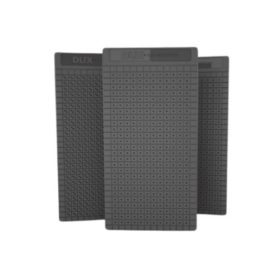Encontre o que precisa com preço baixo, pagamento facilitado no Cartão, Pix ou Bitcoin | Financie em até 48x | (62) 3999-1263 - (62) 99497-9204
The Value of Symbols: From Ancient Egypt to Modern Design 29.10.2025
Symbols have been integral to human culture for millennia, serving as powerful conveyors of meaning that transcend language barriers. From the earliest cave paintings to contemporary logos, symbols encapsulate shared beliefs, spiritual concepts, and societal values. This article explores the enduring significance of symbols, illustrating their evolution from ancient civilizations like Egypt to their vital role in modern design and branding.
Introduction to Symbols: Their Universal Role and Significance
At their core, symbols are visual or conceptual signs that represent ideas, objects, or relationships. They range from simple marks, such as a cross or a circle, to complex representations like hieroglyphs or corporate logos. Throughout history, symbols have served as tools for communication, authentication, and cultural expression.
Across diverse cultures and eras, symbols have maintained their power to evoke emotion, convey complex meanings, and forge identities. For instance, the Eye of Horus, originating from ancient Egypt, exemplifies a symbol that has persisted through centuries, embodying protection, health, and spiritual vigilance.
To understand their importance, we will examine how symbols function as carriers of meaning, their historical origins, and how their significance continues in modern design.
Contents
- The Concept of Symbols as Conveyors of Meaning
- Historical Foundations of Symbolic Communication
- Symbolic Representation in Ancient Egypt
- Evolution into Modern Design
- Practical Applications in Branding and Communication
- Cultural Significance and Risks of Misinterpretation
- Trade and Material in Symbolic Exchange
- Symbols as Living Narratives
- Conclusion
The Concept of Symbols as Conveyors of Meaning
Symbols encode a wide array of cultural, spiritual, and societal values, often acting as visual shorthand for complex ideas. For example, the peace symbol in modern times immediately evokes notions of harmony and non-violence, while in ancient contexts, symbols like the ankh represented life and immortality.
Psychologically, symbols influence perception and identity. They can evoke emotional responses, reinforce social bonds, or serve as markers of belonging. When individuals see a familiar symbol, such as a national flag or religious icon, it often triggers a sense of collective identity and shared history.
Historically, the usage of symbols has evolved from simple markings to sophisticated visual languages that communicate across generations and cultures. Today, modern design continues this legacy, employing symbols that are instantly recognizable and emotionally resonant.
Historical Foundations of Symbolic Communication
Our earliest ancestors used cave paintings, petroglyphs, and hieroglyphs as primary means of symbolic communication. These images conveyed stories, spiritual beliefs, and social hierarchies long before written language emerged. For example, the Lascaux cave paintings in France date back over 17,000 years and depict animals and abstract signs with symbolic significance.
In ancient Egypt, symbols took on profound religious and political roles. Hieroglyphs were not merely decorative but served as sacred scripts that encoded divine truths and royal authority. The Egyptians believed that symbols could influence the divine realm, reinforcing the power of pharaohs and gods alike.
Trade routes like the Silk Road facilitated the exchange of materials and ideas, spreading symbolic motifs across continents. For instance, the deep blue Lapis lazuli from Afghanistan became a valued material in Egypt for amulets and jewelry, often symbolizing royalty and divine favor. This cross-cultural exchange highlights how symbols and their materials traveled, fostering shared spiritual and societal values.
Symbolic Representation of Divine and Natural Forces in Ancient Egypt
Animal-Headed Gods and Their Meanings
Ancient Egyptian deities often appeared with animal heads, each embodying specific divine qualities. For example, Anubis, with a jackal head, symbolized mummification and the afterlife, while Bastet, depicted as a lioness or domestic cat, represented protection and fertility. These animal motifs made divine attributes tangible and recognizable.
The Eye of Horus: A Multifaceted Symbol
The Eye of Horus is perhaps the most iconic Egyptian symbol, representing protection, health, and restoration. According to mythology, Horus’s eye was injured and later restored, symbolizing healing and wholeness. This powerful motif was used in amulets, jewelry, and funerary art to safeguard individuals and their journeys into the afterlife.
These symbols served both religious functions—connecting mortals with divine forces—and societal roles, such as asserting authority and preserving cultural identity.
The Evolution of Egyptian Symbols into Modern Design
Many ancient Egyptian symbols have been adapted into contemporary art, jewelry, and branding. The Get your free spins on Eye of Horus! illustrates how these motifs continue to inspire modern visual culture. The aesthetic qualities of Egyptian symbols—such as their symmetry and clarity—make them appealing for branding purposes, evoking a sense of heritage and spirituality.
For example, the Eye of Horus frequently appears in modern jewelry, tattoos, and corporate logos, symbolizing protection and vigilance. This enduring appeal demonstrates how ancient motifs can be recontextualized to evoke timeless qualities, fostering identity and emotional connection.
The Fusion of Symbolic Meaning with Practical Design
Modern visual communication leverages symbols to create recognizable and meaningful brand identities. Logos such as Starbucks’ siren or the Olympic rings draw upon deep-rooted symbolic imagery to evoke specific associations, whether of allure or unity.
The Eye of Horus exemplifies how ancient symbols are employed in contemporary design to convey protection, vigilance, and spiritual strength. This integration of symbolism enhances consumer trust and emotional engagement.
Non-Obvious Dimensions of Symbols: Cultural Appropriation and Misinterpretation
While symbols carry deep meaning, their misappropriation can lead to cultural insensitivity or distortion. For instance, using sacred Egyptian symbols in commercial products without understanding their significance risks trivializing their spiritual and cultural importance.
It is crucial for designers and creators to understand the original context of symbols to preserve authenticity and respect cultural origins. Universal symbols, when misunderstood, can also lead to cross-cultural misunderstandings, emphasizing the need for cultural literacy in design.
Symbolic Material and Trade: Connecting Ancient and Modern Economics
| Material | Cultural Significance | Trade Routes & Spread |
|---|---|---|
| Lapis Lazuli | Symbol of royalty and divine favor in Egypt | Silk Road facilitated its spread from Afghanistan to Egypt and beyond |
| Gold | Symbol of eternal wealth and divine power | Extensively traded across Africa, the Middle East, and Asia |
These materials’ journeys reflect their symbolic importance and the interconnectedness of ancient economies, which continue to influence modern markets and cultural exchanges.
Deepening the Understanding: Symbols as Living Narratives
Symbols carry stories, beliefs, and collective memories. They serve as visual narratives that connect generations, such as the recurring motif of the Eye of Horus representing protection and health across centuries.
In contemporary design, symbolic imagery continues to tell stories—whether in branding, art, or public monuments—fostering cultural continuity and inspiring innovation. This ongoing storytelling role emphasizes symbols’ vitality as dynamic carriers of human experience.
“Symbols are not static; they are living narratives that evolve with society, shaping and reflecting our collective identity.”
Conclusion
From the ancient Egyptians’ sacred hieroglyphs to the sleek logos of today, symbols have continually shaped human identity and aesthetic expression. Their ability to encode complex meanings, evoke emotional responses, and foster cultural continuity underscores their enduring value.
Understanding the origins and evolution of symbols enhances our appreciation and responsible use of these powerful tools. Whether in art, branding, or everyday life, thoughtful engagement with symbolic imagery can enrich cultural dialogue and personal identity.
For those interested in exploring symbolic themes further, the modern adaptation of ancient motifs, such as the Get your free spins on Eye of Horus!, demonstrates how timeless principles continue to inspire new forms of storytelling and engagement.




